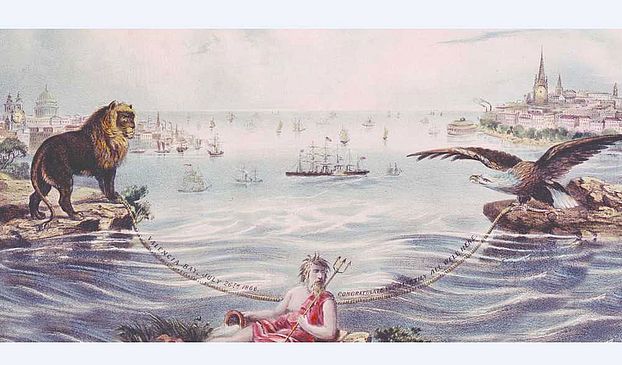/ Research
Neue Publikation: Connecting the Nineteenth-Century World

In dieser Studie beschreibt Roland Wenzlhuemer, Gastprofessor am Europainstitut, die weltweite Ausbreitung des Telegraphennetzes im 19. Jahrhundert und deren politische, wirtschaftliche und kulturelle Auswirkungen.
Lesen Sie die Rezension von Clare Pettitt, King's College London.
Wenzlhuemer’s work takes primarily a quantitative historical approach, charting the technological history of telegraphy and its global spread throughout the nineteenth century and his book includes a substantial appendix of the data that he has painstakingly collected and analyzed from a wide array of sources and archives on the growth and use of telegraph networks in Britain, British India, and the world.
Throughout the book he offers tables and graphs which map the growth of the material network, the frequency of its use, and the ways in which it functions to recalibrate spaces and the relationality between places, showing that, ‘[w]hen shifts in a particular space occur, the relation between the global and the local also changes on a certain level’ (49). While he concedes that it is ‘true that electric telegraphy loosened the connection between the geographic and the communicational distance between two places,’ one of the main arguments that emerges out of his collated data is that telegraphic connection did not annihilate time and place, on the contrary, ‘[t]he opposite is the case’ (255).
In fact, ‘[time] became ever more important’ (99). He illustrates this with an example related by Deep Kanta Lahiri Coudhury writing about the 1908 Telegraph General Strike in India. The signalers on strike ‘did forward telegrams but omitted the date and time of their posting, thus rendering many Messages practically worthless’ (255). Rather than annihilate time, the new telegraph technologies remade it as intrinsic to the communicative function of the medium, along with ‘a need for brevity and specialized mediation that became essential features of telegraph networks’ (55).
Space remained similarly unannihilated. Wenzlheumer quotes Peter Gould on this, who warns against the idea that space shrinks under the pressure of communications technologies: In fact, for many spaces of great geographic importance the very notion of metricity may not be pertinent. What may be much more important is the simple fact of how people and things are connected together. It is the sheer connectivity of things that creates many spaces of interest to a geographer. (40)
Throughout this statistical and data-rich account, Wenzlheumer is never inattentive to the theoretical, cultural and social possibilities of the meaning of the telegraph and his work will be highly suggestive for literary, social, and cultural historians, as it sets out clearly for the first time the global spread of the technology with a rich sense of local and material contexts. He decides that by 1900, ‘global communication space had been almost completely detached from geographic or navigational space’ (128), but this is no flip conclusion: he shows all his workings and he is scrupulous in tracking exactly how this gradually and unevenly came about.
